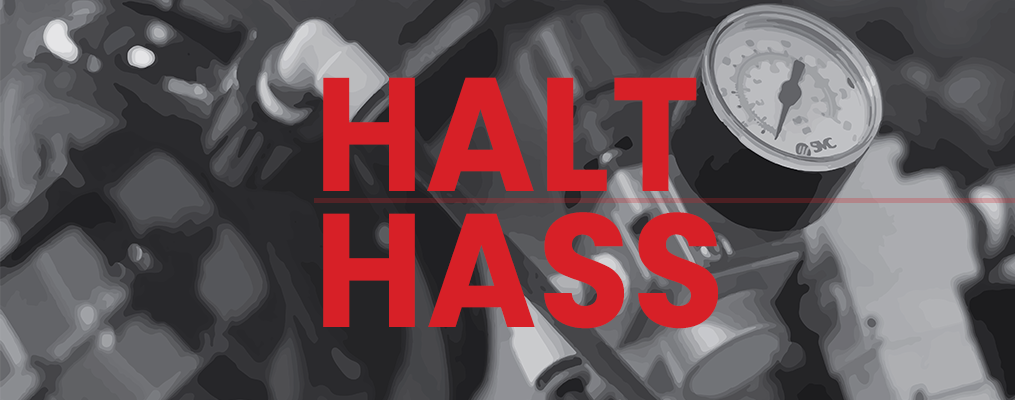Temperature Testing: Can Your Product Defeat the Heat?
Joel Coffman2023-05-12T10:02:24-05:00Temperature is a stress that almost every product experiences – and some products experience more temperature stress than others. Ever consider the surface temperature of electronics sitting on the dashboard of your car during the heat of summer? Would 170°F surprise you?
Now consider the even-higher temperatures of the operating electronics inside the product. Obviously temperature qualification, life testing and analysis of products are all important, but the level of importance varies from product to product. Understanding the typical customer of your product – as well as the typical abuser – is critical to a successful product.
A handful of core temperature tests can be performed to gain an understanding of product performance and survivability when exposed to the stresses of high temperatures, low temperatures, thermal cycling / thermal shock, and temperature with humidity. Temperature stresses are a key part of design qualification and reliability testing, as well as a useful tool when screening production products to ensure quality. Each of these primary types of inflicted stress can identify specific weaknesses:
Weaknesses Identified by High Temperature Testing:
- Causes changes in factors such as resistance, inductance, capacitance, power factors, and dielectric constants
- Destroys moving parts through softening and swelling of thermal insulation
- Causes finished surfaces to swell
- Shortened operating lifetime
- Causes parts to age through heat aging
- Promotes oxidation and chemical reactions
- Transformers and electromechanical components overheat
- Changes viscosity of and evaporates lubricants
- Causes structural overloading due to physical expansion
Weaknesses Identified by Low Temperature Testing:
- Embrittles and lowers flexibility of resin and rubber
- Changes electrical constants
- Causes moisture to freeze
- Increases viscosity of lubricants and causes gelling
- Increases heat loss
- Causes finished surfaces to crack
- Causes structural overloading due to physical contraction
Weaknesses Identified by both High and Low Temperature Testing:
- Operating/release margins of relays and magnetic or thermally activated devices alter
- Materials change in dimension, either totally or selectively
- Packing, gaskets, seals, bearings and shafts become distorted, bind, and fail causing mechanical or integrity failures
Weaknesses Identified by Thermal Cycling / Thermal Shock Testing:
The mechanical strain evoked in Thermal Cyclic Stress Testing is a result of the dissimilar coefficient of thermal expansion for the various interfaces and bonds. Thermal cycles induce low-cycle fatigue mechanisms in metal bonds such as solder fillets in two subsequent steps. First, a small crack forms at locations where high strain amplitudes occur, such as menisci, edges, corners and transition interfaces. The number of thermal cycles needed to initiate a crack is a function of the strain amplitude, which in turn depends on the magnitude of the temperature change during the thermal cycle. Second, once the crack is initiated, it propagates during subsequent thermal cycles.
Thermal Shock is a type of thermal cycling, but refers to a very high rate of temperature change – typically 30 degrees C per minute or higher – and is appropriate for testing packaging, aircraft parts, military hardware or electronics destined for rugged duty. Because almost all products are subject to shipping, this test may be appropriate for any part that will have to withstand an abrupt temperature change in a short period of time.
- Electronic circuit stability varies with differences in temperature gradients and differential expansion of dissimilar materials
- Parts bind from differential expansion of dissimilar materials
- Solder joint cracks
- Distortion or cracking of PCB
- Changes in component parametric values
- Potting / Seal Failures
Weaknesses Identified by Humidity Testing:
- Moisture invades porous substances causing swelling, oxidation from conductance and corrosion between conductive materials
- Extremely low humidity causes brittleness and granulation, potting and seal failures, conformal coating compound failure, electrical shorts due to condensation, oxidation and/or galvanic corrosion of metals, and dendrite growth
TEMPERATURE TESTING: HOW ARL CAN HELP
With 22 temperature, temperature cycling, and humidity chambers ranging from 8 to 32 cubic feet, ARL’s test capabilities allow customer-designed products to meet your environmental testing requirements … or even help you define them.
From the routine to the extremely specialized, we can meet your environmental testing requirements. Austin Reliability Labs performs a wide variety of environmental testing with our ever-expanding capability. We can execute all of your temperature, thermal cycling, thermal shock, and humidity test requirements.
Need help determining the most appropriate test profile for your product? Just ask!
- Temperature Testing: Can Your Product Defeat the Heat?
- Temperature Testing Equipment
- More Information – Environmental Testing
- Temperature Testing Flyer






